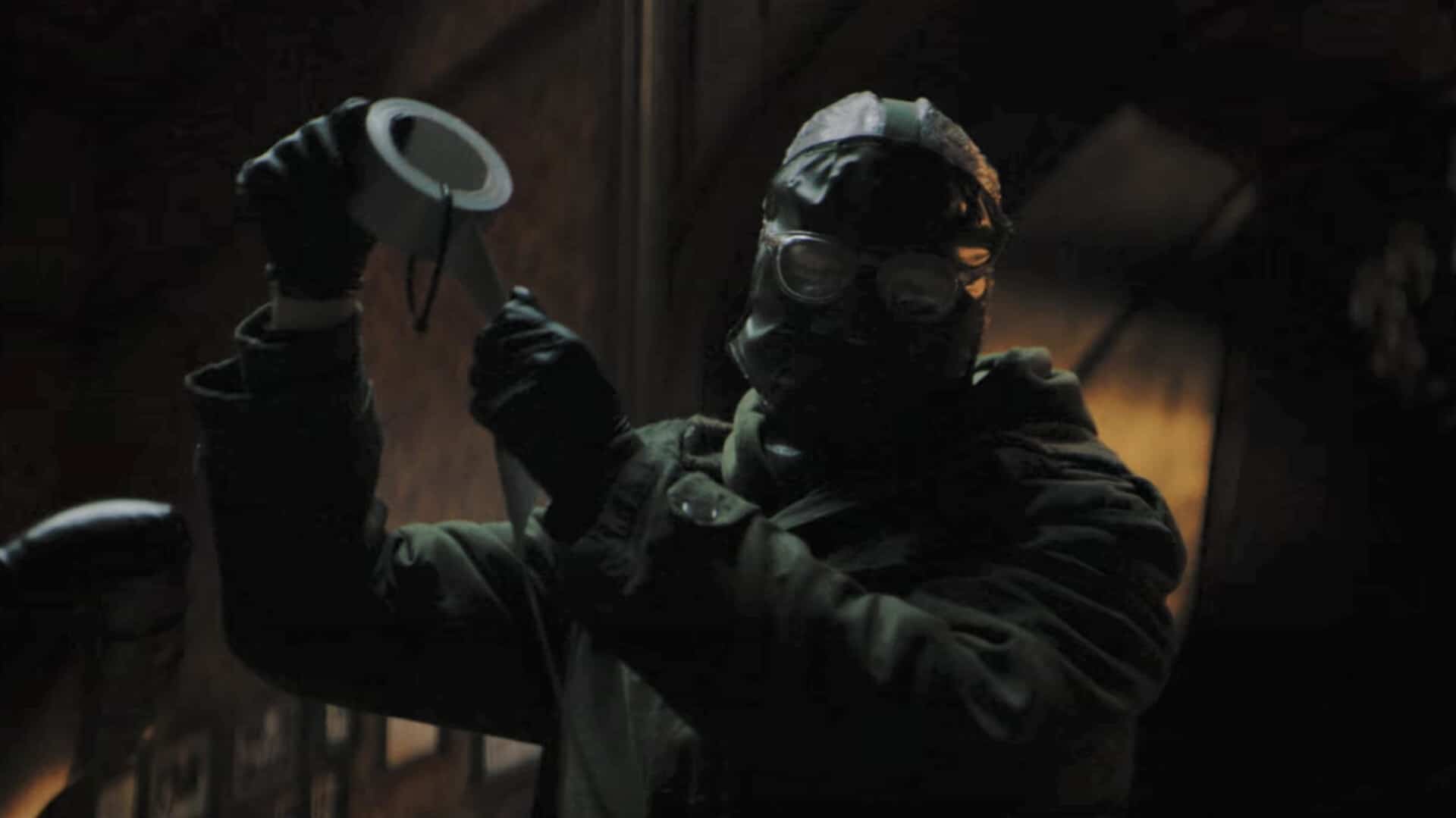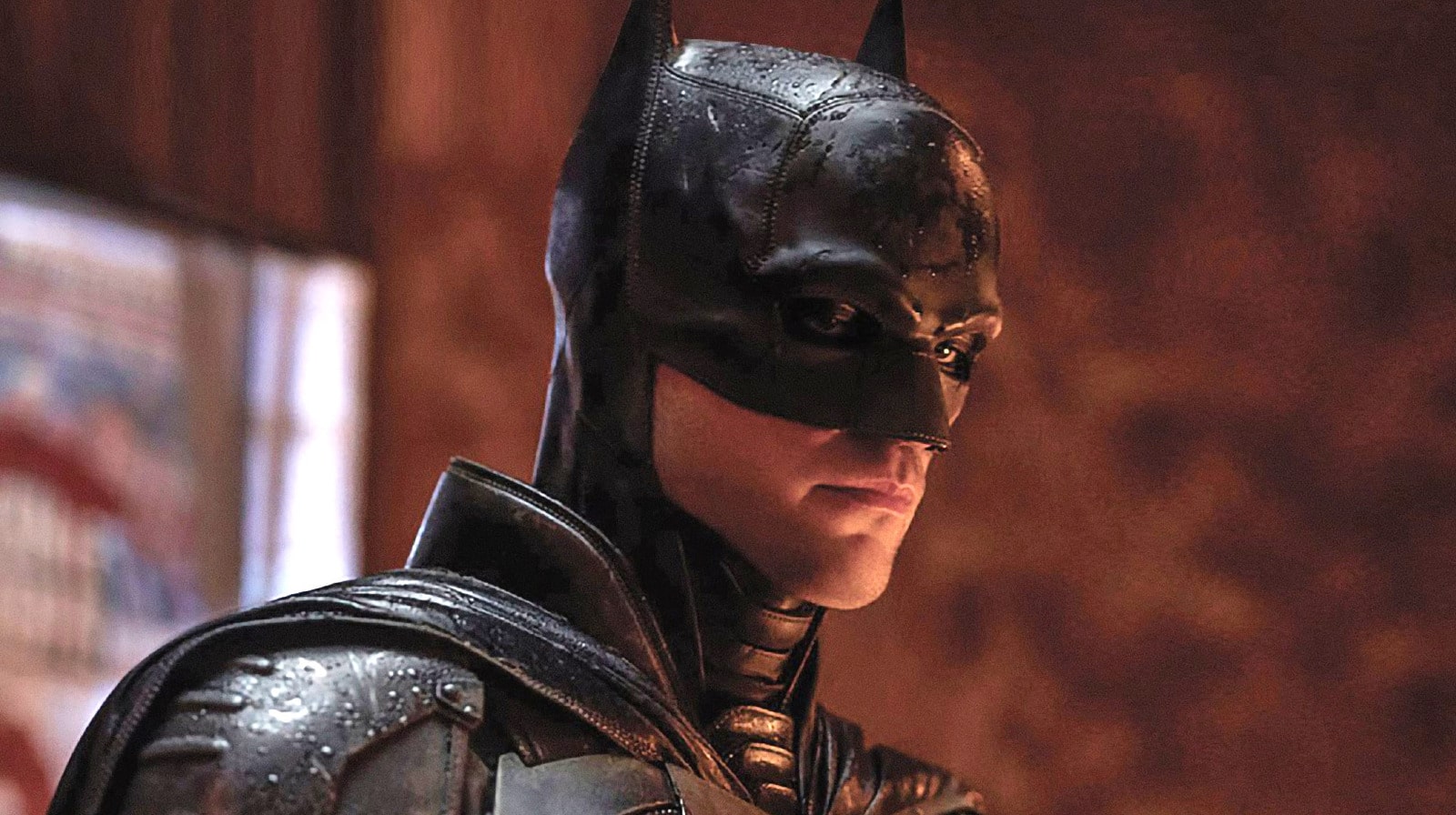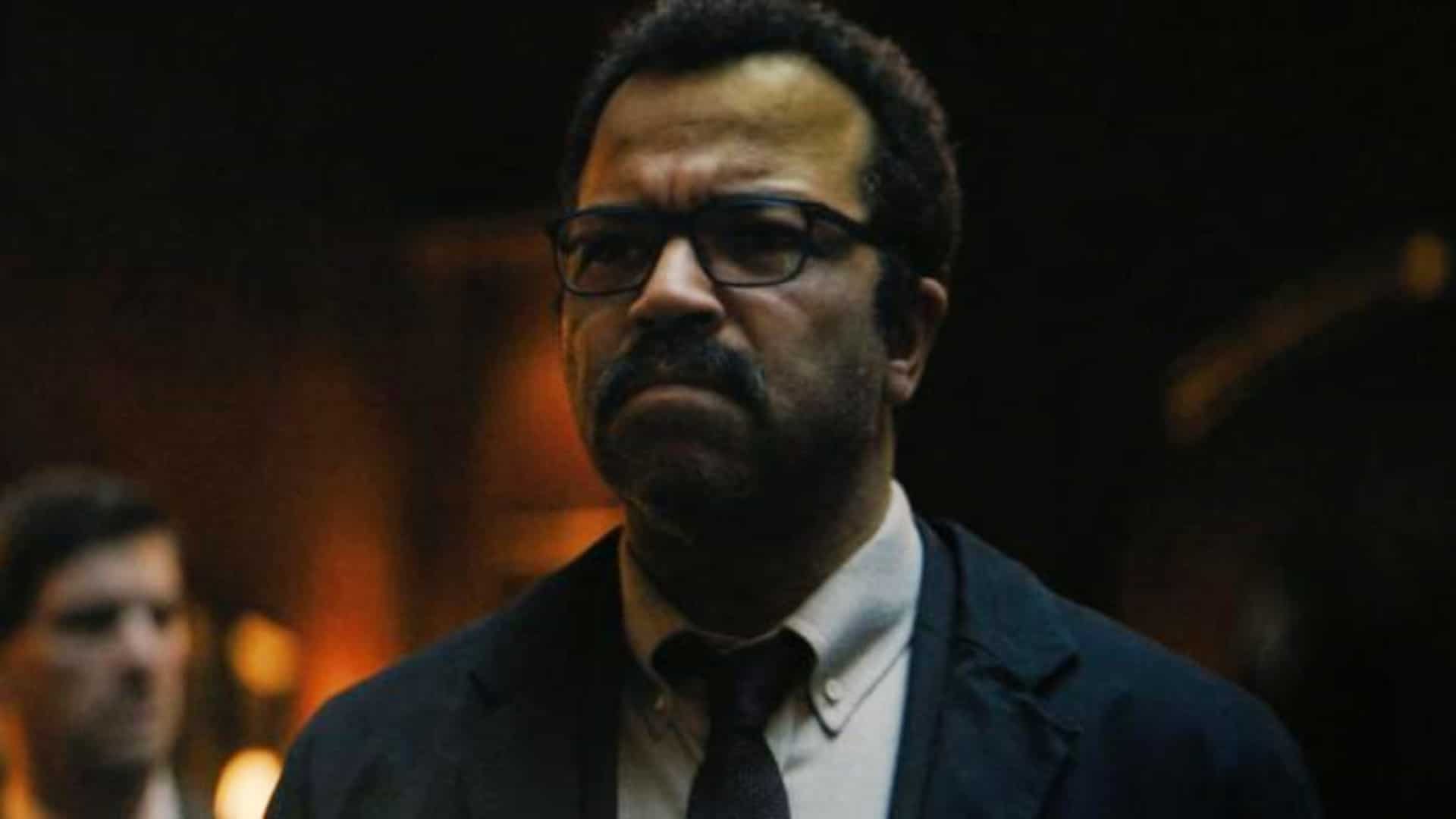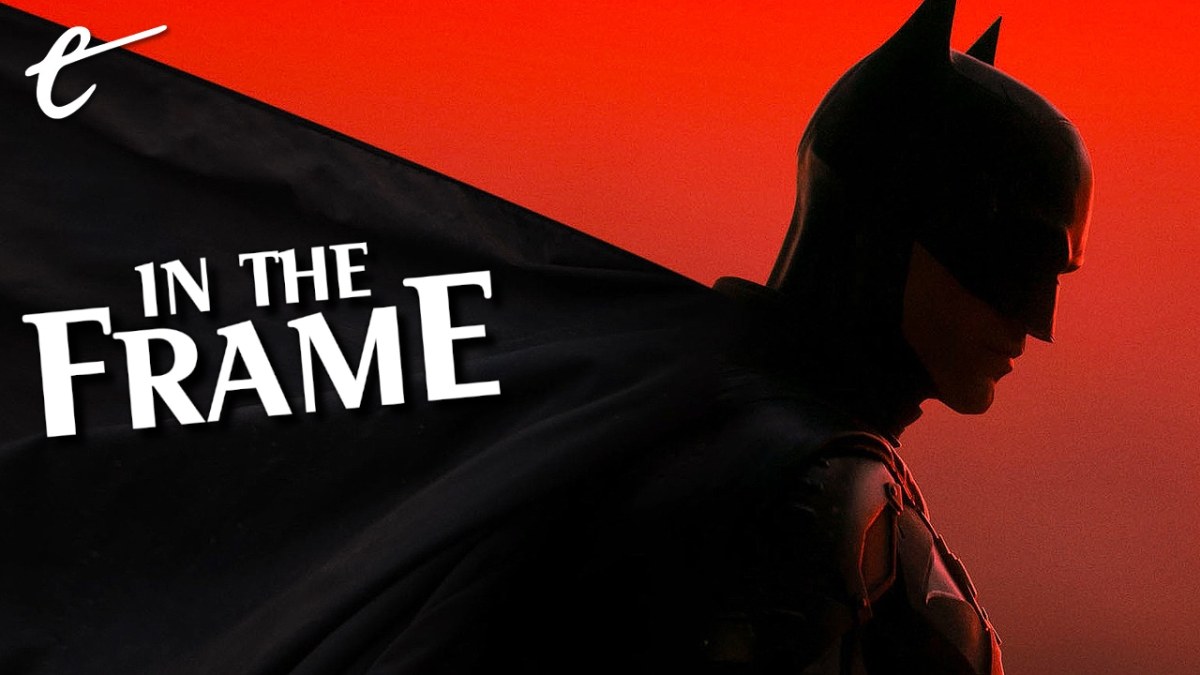This article contains light spoilers for the Matt Reeves movie The Batman in its discussion of voyeuristic themes, paranoia, and ‘70s cinema.
The Batman begins with an act of voyeurism.
The movie’s opening scene places the audience in the perspective of the Riddler (Paul Dano), as he peers through windows. He looks into the lives of the people in the building across from him, until he finds something that catches his interest. A small child plays, dressed up as a ninja, ready to go out trick-or-treating. The Riddler and the audience are peering into the home of Don Mitchell Jr. (Rupert Penry-Jones), the mayor of Gotham. Violence will soon be visited upon this household.
It’s a sequence that directly evokes the iconic opening shot of Francis Ford Coppola’s The Conversation, the classic paranoid thriller starring Gene Hackman as surveillance expert Harry Caul. This is unlikely to be a coincidence. Star Robert Pattinson recalls director Matt Reeves citing Coppola’s film as an influence, explicitly telling the actor, “I want to do a ’70s noir detective story, like The Conversation.” It also sets up a recurring theme that plays across the rest of the movie.
The Riddler is defined as both an observer and a performer. His crimes over the course of The Batman are framed as an intrusion into the private lives of the city’s powerful and elite, as he seeks to expose their secrets and their misdeeds to the world. He communicates to the press through voyeuristic photographs and cryptic video messages. He claims to want the city’s true villain to be brought “into the light.” He broadcasts taunting messages, live-streaming to his followers.

In The Batman, the act of looking is important. Much of Gotham has spent years literally looking the other way, averting their eyes from the real crimes taking place in the city. “Don’t look away!” Jim Gordon (Jeffrey Wright) warns Oswald Cobblepot (Colin Farrell) as he shows the would-be crime lord brutal crime scene photos. When Batman (Pattinson) confronts Cobblepot about an abused waitress at his establishment, Cobblepot shrugs it off. It’s not his responsibility. He’s just a businessman.
Reeves’ camera reinforces this theme. Much has been made of the level of violence that Reeves has managed to depict while still obtaining a family-friendly PG-13 rating. Reeves gets away with this through clever shot composition. Repeatedly throughout the film, violent acts take place within the frame, but are obscured through deliberate use of focus. The effect is uncanny and unsettling, drawing attention to what the audience knows is there but is unable to see.
Appropriately enough, The Batman suggests that its lead is just as much of a voyeur as the Riddler. The first half of the movie relies heavily on contact lenses that Bruce Wayne (Pattinson) wears in his persona as Batman. Those contact lenses are cameras. Once Bruce has returned from his nightly patrol, he can loop and replay the footage in the basement of Wayne Tower, both vicariously reliving the previous night’s adventures and slowly picking apart the images for clues.
The version of Bruce Wayne that appears in The Batman is something of a cypher. The film largely assumes the audience’s existing familiarity with the character and his history, but there’s a notable blankness to this iteration. The film offers fleeting windows into his mindset via excerpts from his journals, but these are more observational than insightful. They also provide another parallel with the Riddler, who keeps his own meticulous and rambling diaries.

The sequence introducing Batman frames the character as a negative space. As the Bat-Signal lights up the sky, criminals around Gotham begin staring into the shadows and the alleyways, wondering where the Batman could be. Batman could be anywhere, and so he is able to appear everywhere. The criminals of Gotham suspect that they are being constantly watched and observed, and that is because Bruce is constantly watching and observing.
The Batman suggests that Bruce has always been a passive observer. Carmine Falcone (John Turturro) recalls a visit to the Wayne household when Bruce was just a boy, peering through the banisters in an image lifted directly from Jeph Loeb and Tim Sale’s The Long Halloween. Early in the film, trying to infiltrate the exclusive club-within-a-club operated by Cobblepot, Bruce enlists the help of Selina Kyle (Zoë Kravitz). Using those contact lenses, Bruce watches through her eyes.
This recurring fascination with looking and seeing makes a great deal of sense, particularly given Reeves’ cited influences on The Batman. Reeves draws heavily from 1970s cinema, which was defined by paranoid anxieties. In 1967, the Supreme Court had reaffirmed the right to privacy in a high-profile wiretap case. In 1968, Congress introduced laws to regulate wiretapping, mostly by requiring warrants. This was the era of the Huston Plan, the Plumbers, and the Watergate Tapes.
The Batman quotes quite heavily from the paranoid thrillers of the era. “One of the first conversations I had with Matt about the script [was how it] has so much Klute in it,” recalled Pattinson. Klute is the first installment in director Alan J. Pakula’s “Paranoia Trilogy,” followed by The Parallax View and All the President’s Men. The film focuses on private eye John Klute (Donald Sutherland), who works with call girl Bree Daniels (Jane Fonda) to investigate a missing person.

This plot neatly parallels one of the driving narratives in the first act of The Batman, as Bruce works with Selina to track down a mysterious woman captured in pictures with a prominent public figure. The opening title sequence of Klute focuses on a tape recording of intimate conversations. Appropriately enough, this plot thread eventually leads both Bruce and Selina to an intimate and accidental recording that provides the missing details and the evidence that they need.
This interest in classic paranoid thrillers makes sense for Reeves, particularly considering his recent work on both Dawn of the Planet of the Apes and War for the Planet of the Apes. Both movies were firmly anchored in classic Hollywood cinematic conventions, but in a way that used those familiar themes and devices to comment on the modern world. After all, The Conversation hasn’t become any less relevant in an era where nearly every American carries a phone with a remote microphone.
Indeed, so much of the modern world is built around observing and watching. This isn’t necessarily a bad thing. Social media can make it possible for people to witness events that would otherwise pass unobserved, helping raise awareness of events like the Ferguson Protests, the Arab Spring, or even the Russian invasion of Ukraine. There is legitimate value in making it possible for the larger world to look at these events.
At the same time, The Batman is also understandably anxious about the implications of this. Voyeurism comes with caveats. The film positions the Riddler as an angry and dispossessed young man essentially radicalized by his sense of powerlessness and preaching online to his own army of angry and dispossessed young men. These same networks that can expose these injustices can also serve as a breeding ground for extremism.

To put it simply, The Batman believes that simply observing is not enough. While horrible things can fester in the darkness when a community decides to look the other way, the act of looking is not a solution. In this sense, the blankness of this iteration of Bruce Wayne seems deliberate. The Batman suggests that Gotham is caught in a spiral of decay and decline and that Bruce is stuck on a similar trajectory. It isn’t sufficient to simply gaze into the abyss and embrace the darkness.
The Batman repeatedly suggests that Bruce’s passivity has already had serious consequences. Early in the film, Alfred (Andy Serkis) advises Bruce that he needs to re-engage with Wayne Enterprises. “If this continues, it won’t be long before there’s nothing left,” he warns. Mayoral candidate Bella Reál (Jayme Lawson) appeals to Bruce, “You really could be doing more for this city. Your family has a history of philanthropy, but as far as I can tell, you’re not doing anything.”
This is Bruce’s arc over the course of The Batman, as the character is challenged to make the transition from a voyeuristic observer of a city’s slow decline into an active participant in its reconstruction. After all, The Batman is a superhero movie, and superheroes are supposed to be dynamic figures who make active decisions for the greater good. Few superhero movies actively engage with what this actually means, but it becomes a central thematic pivot point for The Batman.
It isn’t enough to stare into the shadows. One has to fight them.






Published: Feb 28, 2022 12:30 pm